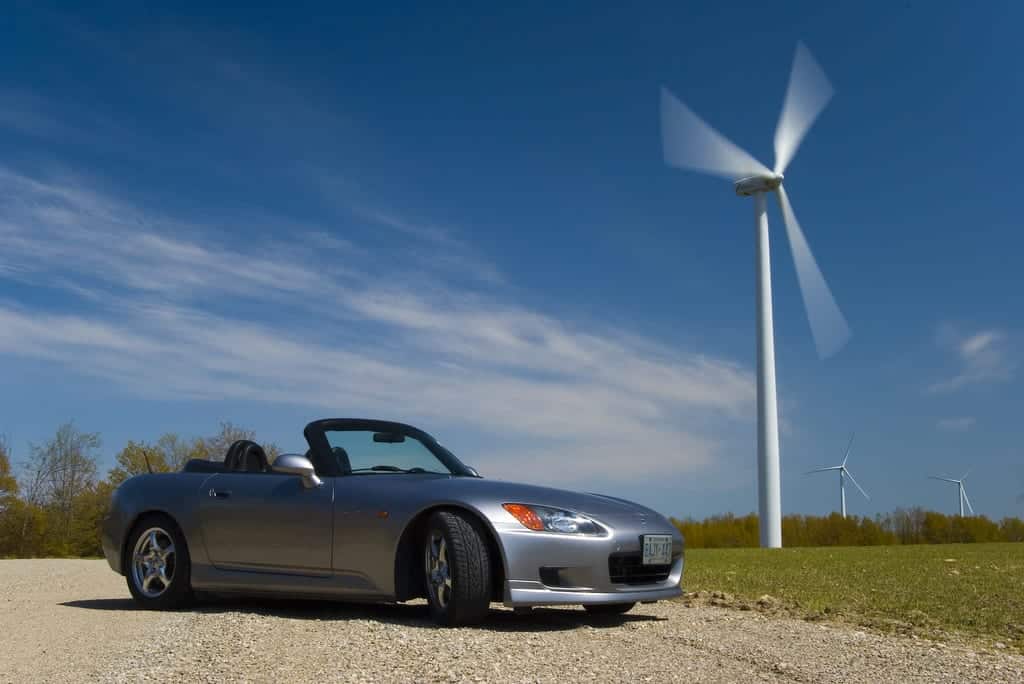Brainstorm Project – Why Wind Turbines Can Work With Less Space Than You Thought
In this article, I explain why wind turbines can be operated with a small physical footprint with a change of application.
First of all: The efficacy of a power source is heavily dependent on how it is applied. Wind farms are no exception to this rule. They are traditionally set up on their own land on which they are spaced hundreds of feet to ensure the turbines don’t interfere with each other.
This is why wind farms require large amounts of space. However, almost all of that space is unused and can be put to use for farming and many other activities. Maybe, wind turbines should be placed on land that wouldn’t otherwise be used, instead of dedicating land exclusively to wind farms.
Wind turbines, however, can be utilized in such a way that they require very little land. Below, i’ll explain why.

Example turbine:
A 2 MW (2,000 kW or 2 million watt) Ecotechnica (now Alstom Wind) E80 wind turbine has a tower width of 3.95 metres (13 feet). The amount of space that a wind turbine physically occupies on the ground is equal to the width of the tower.
This could power 500 homes, assuming that each of the homes consumes 4 kW and is capable of fitting in one person’s back yard, because it requires only 13 feet of space on the ground. Most of the 200-300 feet of horizontal space it requires is above ground because the blades are so long, but that is over 200 feet above ground, leaving plenty of unused space, plus they require hundreds more feet of space between each turbine’s blades.
One 2 MW turbine that could power 500 homes could be setup in each neighbourhood that contains less than 20 people, for example and still generate enough electricity for 500 homes. Therefore, if a wind turbine this size was set up in every neighbourhood, they would generate far more than enough power for everyone, instead of buying expensive land exclusively for wind farms.
In stagnant areas, it may be cheaper to use residential rooftop solar panels on the houses instead.
If the turbines are not being placed on private property, such as a person’s back yard, then the land could be leased to the power company or community purchase group by the government.
Reliability: The concept I mentioned is a form of distributed wind power. It entails spreading wind farms out over a wide area, without actually wasting much expensive land because the area surrounding them can still be used for anything, including farming, and another benefit is that it won’t be polluted with smoke, while generating very little noise most of the time.
When you space out wind turbines this much, you actually increase their reliability. The wind may slow down at one site where there are few turbines, but, it is actually very likely to pick up speed in another location where there are other turbines.
The turbines, in this case, actually back each other up. If all of the wind turbines were clustered into the area in which the wind speed slowed, or even stopped (which is how a traditional wind farm is set up) all of the turbines will generate less electricity or none at all.
My idea entails that less energy storage will be required to back the turbines up, because of the high likelihood that the other turbines are generating electricity, because they are spaced out and scattered everywhere. If the wind is not blowing in one location, it is likely to be blowing elsewhere. If there is any shortage, existing power plants can scale production up or peaking power plants can be switched on within minutes to compensate for that.
This also means that the power plants backing them up would not have to generate as much electricity to do so.




